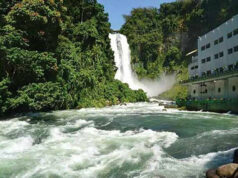No plans to cut Angat dam water allocations
METRO MANILA’S water allocation will remain unchanged after Angat Dam levels approached the 200-meter level a few months before the dry season, the National Water Resources Board (NWRB) said.
Executive Director Sevillo D. David, Jr. said the capital’s main source of supply, Angat Dam, will have sufficient water to supply Metro Manila, avoiding a repeat of last year’s water crisis.
As of 6 a.m. Thursday, the water level at Angat Dam rose 0.11 meters to 202.50, according to the Philippine Atmospheric, Geophysical and Astronomical Services Administration (PAGASA), or below the level considered “ideal” — 212 meters.
However, Mr. David added: “Expected talaga na bumaba ang water level ng Angat Dam kasi kaunti nalang ang ulan at dahil papalapit na ang summer months (The water level decline in Angat Dam is expected because of decreased rainfall with the approach of the dry season), Mr David told BusinessWorld in a phone interview.
He said there is no reason at the moment to adjust water allocations to the two private water concessionaires supplying Metro Manila.
Mr. David said that water allocations to the two water providers will remain at 42 cubic meters per second (CMS).
The capital’s two water suppliers, Maynilad Water Services, Inc. and Manila Water Co. Inc., are implementing the measures to mitigate the impact of reduced rainfall, he said.
Manila Water’s Corporate Communications Head Nestor Jeric T. Sevilla, Jr. said the company will undertake all efforts to prevent a repeat of the 2019 water shortage.
In an interview, Mr. Sevilla said Manila Water will reduce water pressure and selectively interrupt service during off peak hours.
He said the company, which services the east zone of Metro Manila is maximizing output from its Cardona Water Plant in Rizal, which provides 100 million liters of water a day, along with 35 deep wells that produce 44 million liters per day.
On the other hand, Maynilad Water Supply Operations Head Ronald C. Padua said ongoing rotational water interruptions will help avert the shortages experienced last year.
“Water levels usually go down during the summer months due to high demand caused by the heat,” Mr. Padua said in an interview.
Maynilad, the west zone provider, issued the schedule of rotational service interruptions on its social media accounts. Affected cities were Manila, Makati, Malabon, Muntinlupa, and Navotas. — Revin Mikhael D. Ochave



